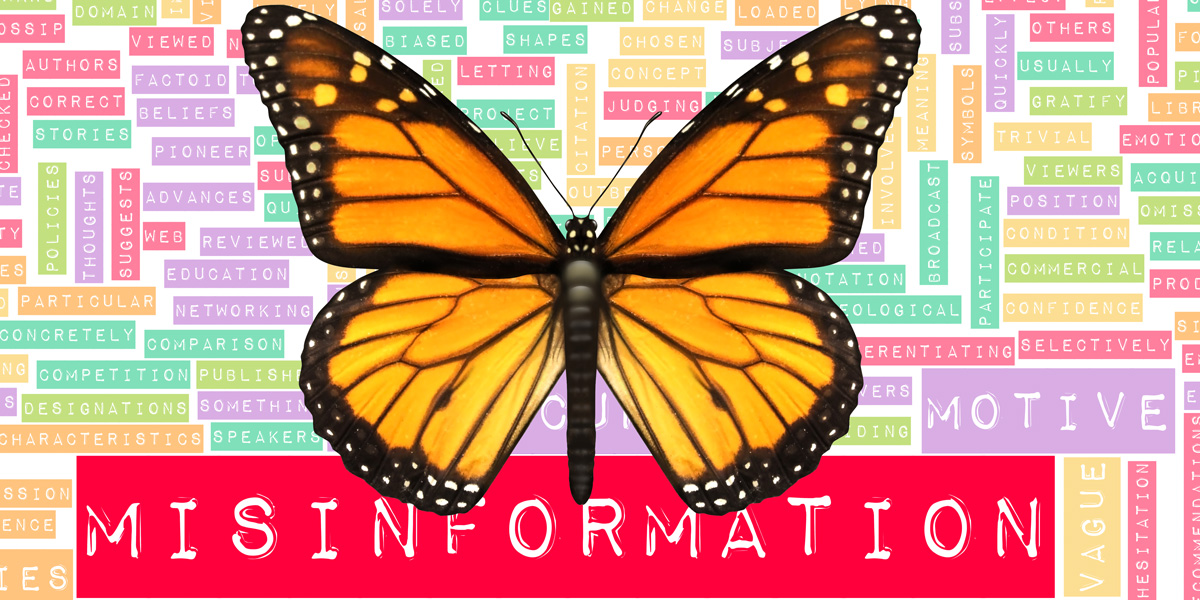
Peer-reviewed article concludes "overwhelming" bias in the data
A new peer-reviewed article debunks a study that attempted to exonerate glyphosate-tolerant GM crops from blame for the catastrophic decline of the monarch butterfly in the US. The article adds to previous criticism of the study from experts.
Glyphosate-tolerant GM crops have consistently been fingered as culprits in the decline of monarchs. That's because milkweed, the only food of the monarch larvae, is wiped out by the glyphosate herbicides applied to these crops.
It was against this background that GMO boosters rejoiced at the appearance early this year of a paper ("Monarch butterfly and milkweed declines substantially predate the use of genetically modified crops") by J.H. Boyle and colleagues, which shifted much of the blame for the monarch's decline away from GM crops and onto other factors.
The authors used museum collections of monarch butterflies and milkweed specimens to conclude that monarch and milkweed numbers began falling in the 1950s, decades before GM glyphosate-tolerant crops were introduced. Therefore, they concluded, "laying the blame so heavily on GM crops" is not "well supported by data": "Herbicide-resistant crops... are clearly not the only culprit and, likely, not even the primary culprit."
We at GMWatch were baffled at how the authors could claim to have calculated the numbers of monarchs in the years prior to 1993, when systematic monitoring began. Given the vagaries of collectors' activities, how could museum specimens give an accurate picture of the numbers of monarchs present in any particular area?
Several experts agreed with us, including the Oregon State University entomologist Tyson Wepprich. Wepprich pointed out that Boyle and colleagues had tried to control for inconsistencies that might arise from collection practices by assessing monarch abundance as a proportion of all museum specimens of Lepidoptera (the class of organisms that contains butterflies and moths). But Wepprich says they missed the fact that Lepidoptera collection methods changed over the last century in a way that favours the collection of moths.
Wepprich argued that the pattern presented by Boyle and colleagues could be explained by a spike in moth museum records in the 1950s. Wepprich wrote that moth records should not be used to correct for butterfly species analyses because the collection process for most moths (light trapping at night) is substantially different than for butterflies (net captures during the day). As a result, Boyle and colleagues' figures for monarch abundance were not "robust".
Another type of bias in Boyle and colleagues' data
The new peer-reviewed article, published as a letter in PNAS by US university-based researchers, further debunks Boyle and colleagues' conclusions. In the article, Leslie Ries and colleagues address the problem of spatiotemporal bias in Boyle's data. "Spatiotemporal bias" means the study could have been biased by the times and locations in which the museum samples were collected.
Ries and colleagues state that one way of reducing this bias is to restrict analysis to the times of year and locations in which the species is most evenly distributed and consistently abundant. In the case of monarchs, this is the summer breeding season.
The researchers analysed Boyle and colleagues' dataset and "found overwhelming spatial and temporal bias" in the data: "Half of all summer monarch records (51%) were accumulated in 2 restricted clusters in Minnesota and New England, with most specimens collected during a very limited number of years... We find no mid-20th–century peak [followed by decline] in abundance when using the corrected data."
Ries and colleagues added that with appropriate correction, the average number of observations per year was only 2.3 monarchs, with a median of 1. These numbers are far too low to enable any meaningful conclusions.
Ries and colleagues' damning conclusion is that "The spurious pattern presented in Boyle et al. represents a cautionary tale in the use of opportunistic data to track population trends. Because of limited data availability and overwhelming spatiotemporal collection biases... using digitized museum records to track monarch butterfly populations over the last century is currently not possible."
Boyle and colleagues' reply unconvincing
Boyle and colleagues replied to Wepprich and Ries and colleagues in an article in PNAS. Boyle and colleagues admit that their critics' argument on monarch numbers is "plausible" and that "the monarch trend presented in our original study may or may not represent the true trend in monarch abundance over the 20th century". In other words, their study cannot be relied upon as a guide to monarch population trends.
But Boyle and colleagues persist in arguing that their figures on milkweed numbers "are likely to be more robust" because there are more milkweed specimen records than monarch records and collection methods are less specific than is the case with butterflies and moths. They obtained the supposed figures on milkweed abundance by a method similar to that used to estimate monarch numbers, dividing the number of milkweed specimens collected each year by the total number of vascular plants collected each year in the same geographic range.
Boyle and colleagues state that milkweed declines supposedly began decades before GM crops, which they say "is strong evidence against the milkweed-limitation hypothesis driven by GM crops, regardless of when monarch declines began".
This, of course, is nonsense. The proportion of milkweed specimens amassed by collectors at different periods of history, weighed against the total number of plants collected, cannot be assumed to reflect the numbers of these plants growing in fields and elsewhere. And even if Boyle and colleagues are correct in stating that milkweed decline started before GM crops were widely planted, that doesn't exclude the fact that GM crops have been a major factor in furthering this decline.
---
The new article:
Tracking trends in monarch abundance over the 20th century is currently impossible using museum records
Leslie Ries, Elise F. Zipkin and Robert P. Guralnick
PNAS, July 9, 2019
https://www.pnas.org/content/pnas/116/28/13745.full.pdf










